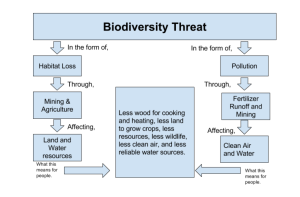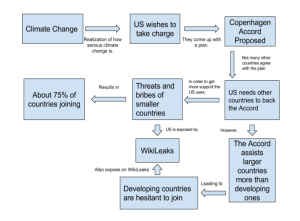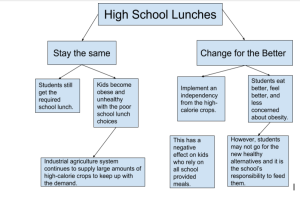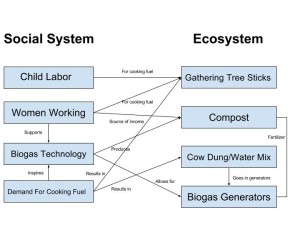In 250-350 words, first define what H.I.P.P.O. means. Then using the biodiversity threats that have been described, compare any which apply to your own hometown. Then, use a diagram to link the biodiversity threats to how they affect your hometown. State College students use your home address not State College. Be sure to use information from the module in your response.
1.
H.I.P.P.O. is an acronym used to describe the many threats to biodiversity today. The acronym stands for Habitat Loss, Invasive Species, Pollution, Human Population, and Overharvesting. My hometown of Wilkes-Barre, PA can be related to many of these topics. The first being habitat loss. The definition of habitat loss from the module is when an area is converted from usable to unusable habitat. Two of the contributors for Wilkes-Barre would be agriculture and mining. The outskirts of Wilkes-Barre are known to have farms and large fields where crops are grown, which takes away from the habitat to be used seeing as it is already filled. Wilkes-Barre is also known for its coal mining many years ago. This has left polluted waters which are also unusable. Wilkes-Barre is also guilty for its pollution. Between the crowded inner city with cars and trucks, and the industrial factories which produce things such as steel or junkyards melting metals, Wilkes-Barre is far from an eco-friendly city. Not many ride bikes because they do not share the streets with cars. Aside from pollution in the air, there is also fertilizers which are polluting river runoffs. This is resulting in bioaccumulation as discussed in the module. Bioaccumulation is when chemicals become increasing in animal tissue as they move up the food chain. This can be seen in our river where fish are exposed to the toxins of fertilizers and coalmine runoff. Should another animal eat any of these fish, they obtain all of the persistent organic pollutants, or POPs. This is a growing concern that the citizens of Wilkes-Barre need to be aware of and take action.




